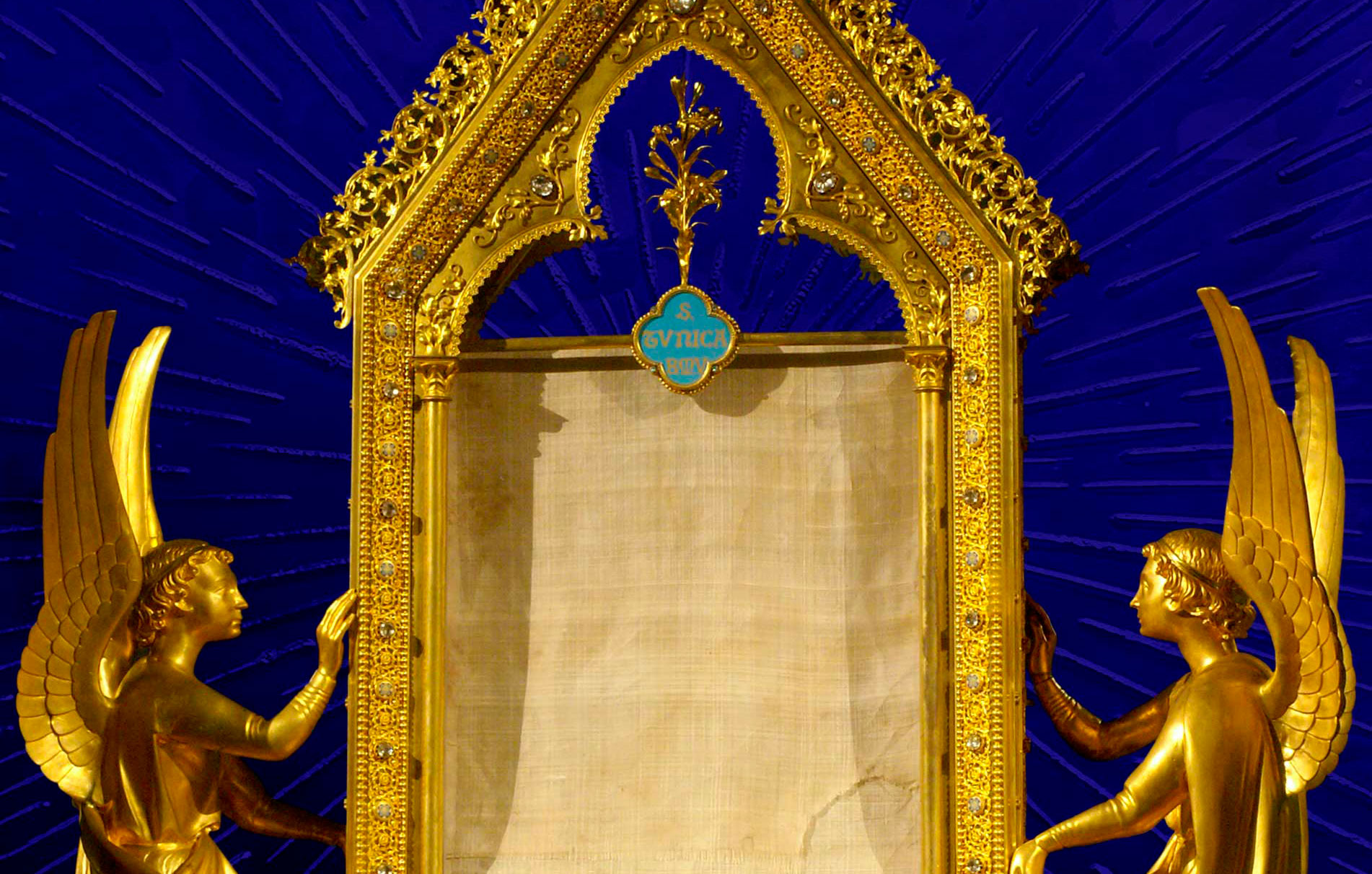
It is customary, when discussing the great Marian relic, to highlight its arrival in Chartres in 876 and to assert that it has not left the cathedral since that date. However, some nuances are necessary.
The Veil was kept in Lourdes during the Second World War. Additionally, the capitular register, maintained by the cathedral’s canons and preserved in the historical archives of the Diocese of Chartres, reveals that it was also “protected” in Paris during the First World War.
The Veil of the Virgin, 1905–1918
« On Thursday, March 24, 1927, the eve of the Feast of the Annunciation, around 5:00 pm, in the Bishops’ Mortuary Chapel, His Excellency the Bishop, accompanied by the vicars general, the Chapter, the diocesan secretaries, the master of ceremonies, the cathedral clergy, the professors of the choir school, the archpriests of Nogent-le-Rotrou, Dreux, Châteaudun, the diocesan archivist, Mr. Étienne Houvet, and two sisters from the Maison Bleue, proceeded to open the Holy Reliquary to place the precious Veil of the Blessed Virgin into the monstrance for display to the faithful during the Marian Feasts.
The reliquary was opened, and the last authentication document was read aloud. The various parts of the Holy Veil were displayed: the oriental fabric known as the Empress Irene’s cloth, and the white silk piece protecting the Holy Veil. His Excellency kissed the Holy Veil and invited all attendees to do the same. The Holy Veil was photographed by Messrs. Delaporte and Houvet. His Excellency placed the large piece of the Holy Veil in the monstrance, while the smaller piece was returned to the cedar chest that had held it.
The reliquary, donated by Miss de Byss in 1849, was found to need repairs, which were to be carried out by the Poussielgue workshop in Paris. The sealed monstrance, surrounded by four lit candles, was then incensed twice. A prayer, Ave Maris Stella, Ave Maria, and a final oration followed.
The monstrance was then placed in the tower of the mortuary chapel, overlooking the choir school, awaiting the Marian Feasts, during which it would be displayed in the cathedral. The Holy Veil would be visible to all from May 31 to June 7. »
« Note: In 1905, as the Inventory Laws preceding the Church-State Separation (or spoliation) loomed, the Holy Veil, with the Chapter’s consent, was removed from the cathedral and hidden. To mislead, it was rumored that the Veil had been sent to Carmelite refugees in the Netherlands. In reality, Miss de Byss’s reliquary remained at the bishop’s residence, while the inner boxes containing the Holy Relic were entrusted to Mr. Lefébure of Boissy-le-Sec (now Boissy-lès-Perche).
During the Franco-German War of 1914, when German long-range artillery could shell Paris, a shell hit Mr. Lefébure’s house, piercing it from top to bottom, yet the room containing the Holy Relic remained unscathed. Informed of the danger, Bishop Bouquet had the relic retrieved by Canon Havard, the seminary director. The Veil was returned to the bishop’s residence in Chartres and placed back in Miss de Byss’s reliquary, awaiting the time when it could safely return to the cathedral, where it was once again venerated by clergy and faithful alike during special feasts. The ancient custom of displaying the Veil on the altar during High Mass on major feast days, however, has yet to resume. »
A lesser-known Story: The Veil of the Virgin during the 1939-45 War
By Jean-Marie Lester (Écho Républicain, 1976)
In June 1940 (corrected from a typographical error in the year), the clergy of the cathedral sought to protect the Veil from the perils of war. Canon Fessler, the archpriest, and Father Lefeuvre, a vicar, commissioned a protective case in which to place the cedar reliquary enclosed within another reliquary distinct from the monstrance.
These two priests, accompanied by Father Bouard, left Chartres and traveled through Normandy, eventually passing the Loire River at Ancenis. They stayed for a week at the grand seminary in Luçon, Vendée, before continuing their journey to Lourdes. There, the reliquary was entrusted to the chaplain of the basilica. They remained in Lourdes for twenty days before returning to Chartres to celebrate the Assumption on August 15, reporting their mission to Bishop Harscouët.
It is also recorded, based on confirmations from Dom Pierre Rullon and Dom Jacques Hourlier, that earlier, likely in May 1940, the relic was housed at the Solesmes Monastery following the declaration of war.
Thus, this precious relic followed a path mirroring the exodus of the French people, evoking a poignant solidarity with a population in distress.